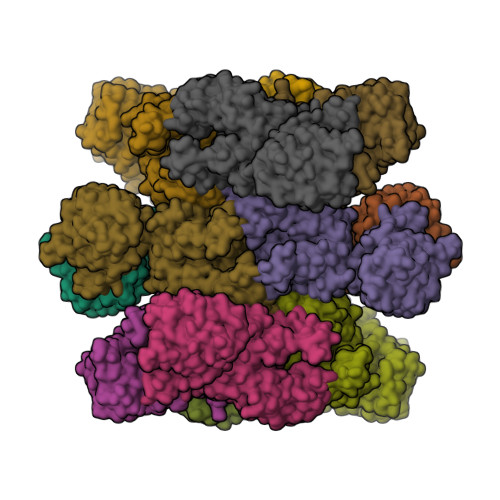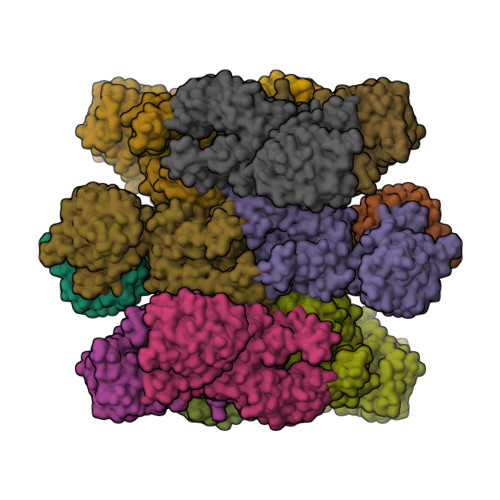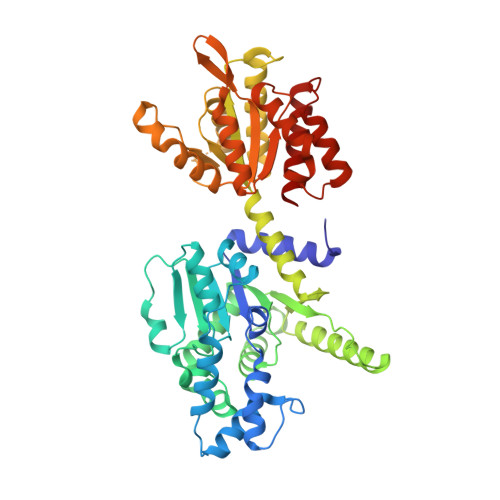Activation of Thoeris antiviral system via SIR2 effector filament assembly.
Tamulaitiene, G., Sabonis, D., Sasnauskas, G., Ruksenaite, A., Silanskas, A., Avraham, C., Ofir, G., Sorek, R., Zaremba, M., Siksnys, V.(2024) Nature 627: 431-436
- PubMed: 38383786
- DOI: https://doi.org/10.1038/s41586-024-07092-x
- Primary Citation of Related Structures:
8BTN, 8BTO, 8BTP - PubMed Abstract:
To survive bacteriophage (phage) infections, bacteria developed numerous anti-phage defence systems 1-7 . Some of them (for example, type III CRISPR-Cas, CBASS, Pycsar and Thoeris) consist of two modules: a sensor responsible for infection recognition and an effector that stops viral replication by destroying key cellular components 8-12 . In the Thoeris system, a Toll/interleukin-1 receptor (TIR)-domain protein, ThsB, acts as a sensor that synthesizes an isomer of cyclic ADP ribose, 1''-3' glycocyclic ADP ribose (gcADPR), which is bound in the Smf/DprA-LOG (SLOG) domain of the ThsA effector and activates the silent information regulator 2 (SIR2)-domain-mediated hydrolysis of a key cell metabolite, NAD + (refs. 12-14 ). Although the structure of ThsA has been solved 15 , the ThsA activation mechanism remained incompletely understood. Here we show that 1''-3' gcADPR, synthesized in vitro by the dimeric ThsB' protein, binds to the ThsA SLOG domain, thereby activating ThsA by triggering helical filament assembly of ThsA tetramers. The cryogenic electron microscopy (cryo-EM) structure of activated ThsA revealed that filament assembly stabilizes the active conformation of the ThsA SIR2 domain, enabling rapid NAD + depletion. Furthermore, we demonstrate that filament formation enables a switch-like response of ThsA to the 1''-3' gcADPR signal.
Organizational Affiliation:
Institute of Biotechnology, Life Sciences Center, Vilnius University, Vilnius, Lithuania. giedre.tamulaitiene@bti.vu.lt.


















